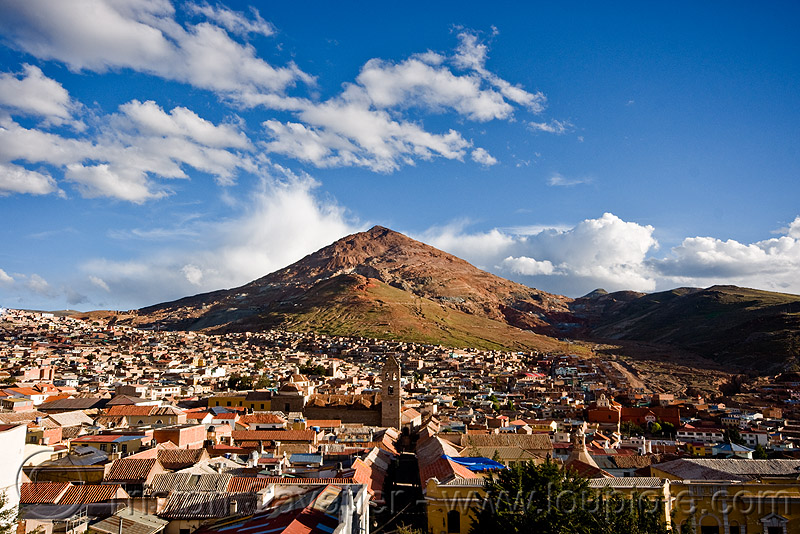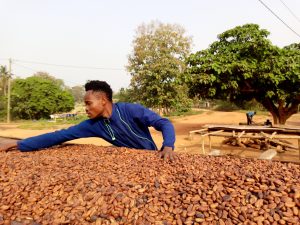In the year 1545, a man by the name Diego Huallpa accidentally discovered Potosi in Boliva, also known as Cerro Rico.1 Cerro Rico means rich mountains, which, in this case, it definitely was. When traveling between cities, Diego Huallpa was asked to climb a mountain; after getting to the top he slipped and fell and found on the side of the mountain some silver. Diego Huallpa immediately took his findings to his boss, which was a Spanish overseer at a nearby mine. Shortly after, that mountain was quickly inhabited by thousands of Spaniards and Indians. The silver of this mountain quickly drew the attention of the Spanish conquistadors. When these conquistadors arrived, they began to colonize the area surrounding the mountain.2 By 1672, the surrounding area reached its highest population of 200,000 people, and was one of the richest cities of its era.3 It became a very strong anchor for the Spanish Empire. This city sent Spain’s economy to new heights, making the Spanish more powerful than before.4
Silver during the sixteenth century was one of the most sought-after metals in all of Spain.5 The area itself surrounding the mountain was not a healthy environment, and the air was constantly filled with dust and debris. Miners were only expected to live to be around forty years old.6 To make matters worse, Potosi is the highest city in the world, making the air thin and hard to breathe. The city resides 4000 meters above sea level.7 All in all, the surrounding area was a cruel place to live, but the Spaniards stayed due to the wealth they achieved. This wealth was achieved easily for the Spanish, but came at a great price to the indigenous Indians and to the African slaves.8

Potosi was a cruel, horrible place for anyone who worked there. The process of mining in the sixteenth century was not an easy one. It was extremely laborious and hard for all miners. The Spanish conquered the Andeans and put them through rough, intensive work.9 Though the Indians were not slaves they were sometime treated as such. Some Spanish conquistadors would lend Indians under their care to other miners. At Potosi, as elsewhere in Spanish South America, the Spanish implemented the mita system of labor. In this system, miners would be given a certain number of days to work per week, and then they would relax on the other days. Though it was more intense, all ages would be put to work, ranging from eighteen to fifty years old.10 Before the Spanish empire found an easier way to mine, they used the classic way of mining, which was extremely laborious.11 The Indians were to use iron bars to chip out iron ores, which was then carried down the mountain, where it would be heated in order to extract the silver.12 The mountain was a very dangerous place, due to its close spaces with very little air.
The silver industry in the sixteenth century really flourished. It was in great demand and needed for the Spanish and Europeans.13 Even though mining slowed down after Bolivia received independence, Potosi, still to this day is a high producer of silver.14 The Potosi mountains have had several years where they have really good production, but that has also come with several bad years.15 Still to this day Potosi is a high producer of silver and tin, causing Potosi to be one of the oldest mining cities in the New World.16
- Oxford Research Encyclopedia, May 2015, s.v. “Potosí Mines,” by Kris Lane. ↵
- Oxford Research Encyclopedia, May 2015, s.v. “Potosí Mines,” by Kris Lane. ↵
- New World Encyclopedia, February 2017, s.v. “Potosí.” ↵
- Oxford Research Encyclopedia, May 2015, s.v. “Potosí Mines,” by Kris Lane. ↵
- History of World Trade Since 1450, 2006, s.v. “Potosí,” by Peter Bakewell. ↵
- New World Encyclopedia, February 2017, s.v. “Potosí.” ↵
- Oxford Research Encyclopedia, May 2015, s.v. “Potosí Mines,” by Kris Lane. ↵
- Tom Zoellner, “The Mountain That Eats Men,” World Literature Today (serial online) 88(3/4) (May 2014): 83-87. ↵
- Oxford Research Encyclopedia, May 2015, s.v. “Potosí Mines,” by Kris Lane. ↵
- Oxford Research Encyclopedia, May 2015, s.v. “Potosí Mines,” by Kris Lane. ↵
- Tom Zoellner, “The Mountain That Eats Men,” World Literature Today (serial online) 88(3/4) (May 2014): 83-87. ↵
- Oxford Research Encyclopedia, May 2015, s.v. “Potosí Mines,” by Kris Lane. ↵
- History of World Trade Since 1450, 2006, s.v. “Potosí,” by Peter Bakewell. ↵
- New World Encyclopedia, February 2017, s.v. “Potosí.” ↵
- Oxford Research Encyclopedia, May 2015, s.v. “Potosí Mines,” by Kris Lane. ↵
- Oxford Research Encyclopedia, May 2015, s.v. “Potosí Mines,” by Kris Lane. ↵



63 comments
Eduardo Foster
The title is actually what grab my attention. I have never heard about Potosi before in my life. The title actually explains the whole story in one sentence. Very informational about the lifespan miners had and consequences Spaniards had. It’s amazing that after all this time, Potosi is still a mine and the production continues. Great article, keep it up with the good work!
Maria Callejas
Good title choice, it really does portray the reality of Potosi’s mining business, both notorious and dangerous. You chose evidence wisely, as it reinforces your goal of highlighting the terrible working conditions. For instance, showing the lifespan of mine workers displayed the reality of early Potosi’s growing business. I really do hope that mining in Potosi is far more regulated than it was during the Conquista, that would have been great to add in your conclusion. Besides that, good informative article!
Sam Vandenbrink
Very interesting article, Mining for silver does not sound like an easy job to do. I learned about how allot of work goes into mining for silver, and it creates a bunch of dust that is hard on our lungs and hurtful to the environment. The miners had a hard job and crazy long hours, the conditions they worked in were very unhealthy. But in comparison to other mining jobs they didn’t have it all that bad, they had days off and time to rest between times they were working, good article very explanatory.
Alexis Soto
I must say this article was well-written. It flows so well I was able to focus on the subject. The article was captivating and because of that I read carefully. The topic itself was great. Before reading this article I had no idea what Potosi was or its significance. Now I am much more informed. I always enjoy reading about topic in the Americas. Nice reading!
Zaraly Frasquillo
This is a very well written article! I think I’ve heard of Potosi before in my high school history class, but I never really paid attention. Whenever I think of mining I think of the California Gold Rush or “Blood Diamonds”. I also never knew that silver mining was big in Spain. This was a very interesting article and super informative, I really enjoyed reading it.
Lianna Ybarra
I have never heard of Potosi Mountain, also I had no idea it still existed today. I think its unfortunate and sad how the indigenous people were forced to work on this mountain for the Spanish who had just gotten there. It’s also crazy to think of the different living situations that these people went through just for wealth, especially how the air was so thin at the top of the mountain they could barely breathe. Overall a great article!
Samuel Sanchez
This was an interesting topic. I never heard of Potosi nor how rich it was in silver. It is sad to hear that the miners worked in such terrible conditions. They would risk their lives just to obtain the silver and I did not know that with the area being above sea level would cause the air to be thinner. The combine that with the amount of debris in the air it is just deadly. So the title of this article is perfect and it actually attracted me to read your article. Great job!
Nelson Smithwick
It is really unfortunate that most of the time that a valuable resource is discovered somewhere the peoples native to that area are exploited and usually forced to work so that another group may prosper from it. From rubber plantations in the Belgian Congo to Coltan mining in modern Africa, these stories repeat themselves endlessly in human history. At least with Bolivian independence, the people’s of Potosi can better benefit from their work.
Teresa Valdez
This topic is fascinating. I have always read about mining in the colonial Americas, but had never heard of a specific account or example of mining. It is astounding what people will do for wealth, especially exploiting indigenous people and African slaves. It was a shock to read that the life spans of the miners were so short and I enjoyed all the details that were included in this article. Great job!
Alyssa Vela
This was a really good article! I liked how you started off with a story, it made me, the reader stay interested from start to finish. It was so sad to read about the treatment of the natives. There was a lot of mind boggling information in this article, and the way you were able to tie everything together was great. You can tell that you put a lot of research into this, great job! I look forward to reading more of your work.